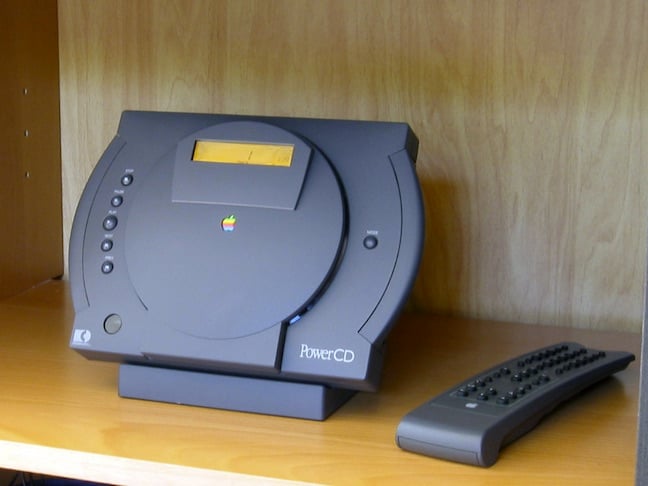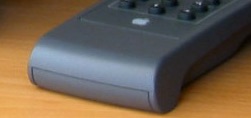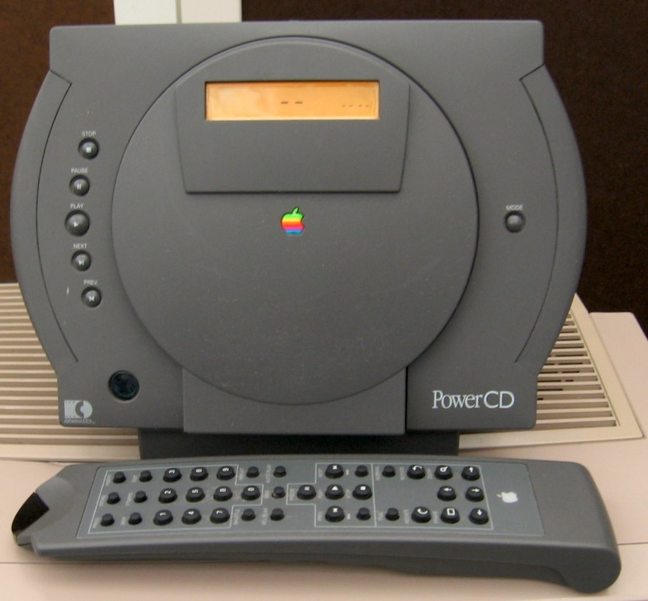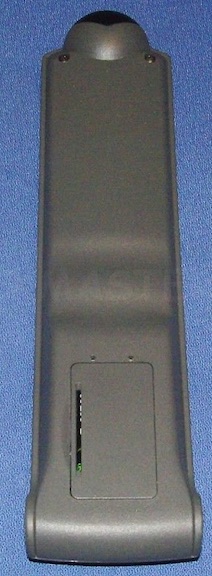This article is more than 1 year old
When Steve Jobs was away, Apple's designers snuck out a penis-shaped remote control
The PowerCD's remote did not need a domed, bulbous tip
Apple at 40 Forget what you "know" - that Apple concentrated on just Macintosh computers.
Down the years - before iPods, iPhones and Pads, before watches - Apple tried to make all sorts of new technology markets. There was gaming with the Bandai Pippin in 1996 and personal digital assistants with 1993's Newton, for example. Apple's first attempt at mobile came in 1989 with the Macintosh Portable – not so much fondleslab as slab.
In 1993, in the middle of that era in Apple's history whose most notable characteristic was the fact Steve Jobs was no longer chief executive, Apple released a product called the PowerCD. Now, the PowerCD is not even a footnote in the footnotes of history, because it wasn't even an Apple product. Apple re-branded the Philips CDF 100, which Kodak sold as the PCD 880. But to your correspondent's mind the product deserves to be remembered because its remote control looked like a deliberate attempt to make a product resemble a penis and testicles.
The PowerCD was a triple threat: it could play audio CDs and connect to an amplifier; it could play Kodak Photo CDs on your television; and it was a CD-ROM player, albeit a single-speed affair. It was even portable: the device sat on a small cradle that could house eight AA batteries.
I acquired one on sale in 1994, when they were stacked high for sale because the device was no good at any of its three jobs. The batteries scarcely lasted through a single CD and Apple's speakers were neither light nor elegant. Kodak Photo CD was a format that never flew.
I bought the device to play MYST, which warned it needed a 2x CD-ROM. I should have heeded that warning: the game was unplayably slow (and to my mind just unplayable, but that's another story). I had the last laugh because I later sold the device for AU$150, rather more than they fetch on eBay these days.

The Apple PowerCD. Source: Wikipedia
I was sad to see it go because the remote was outlandish. At right is a picture of it from the device's manual.

The PowerCD remote. Click to enlarge
Trust me, that remote has no business having a bulbous, domed tip like that. No business at all. Even in 1993 it was possible to build an infrared remote without such a prominent source of emissions.
High-resolution images of the PowerCD are hard to come by, but the detail below from Wikipedia shows the odd curls at the remote's bottom end.

Trust me on this: there was a subtle curvature to the remote's back. When viewed side-on, it was hard not to imagine what Apple's designers had on their minds.
Here's another look at the remote, and the PowerCD.

A closer look at the PowerCD remote. Click here to enlarge. Source: Wikimedia
Here's the money shot: the remote seen from behind, found on an eBay sale.

When your correspondent shared this image with colleagues their reaction was a startled “Can't un-see!”
I've never been able to look at the remote and its scrolled bottom end, gentle curve and bulbous tip without thinking that Phillips', Kodak's and Apple's designers were making a rather puerile joke when they dreamed up the device. Or maybe that's just the kind of skewed take on the world it takes to become a Reg writer. ®
